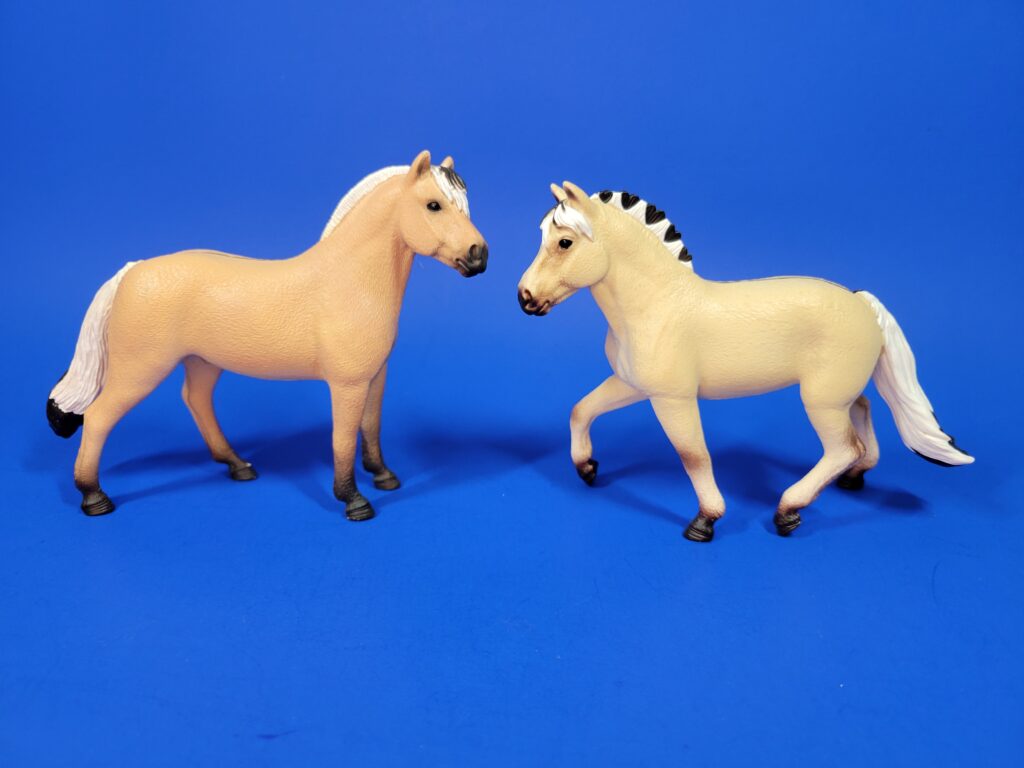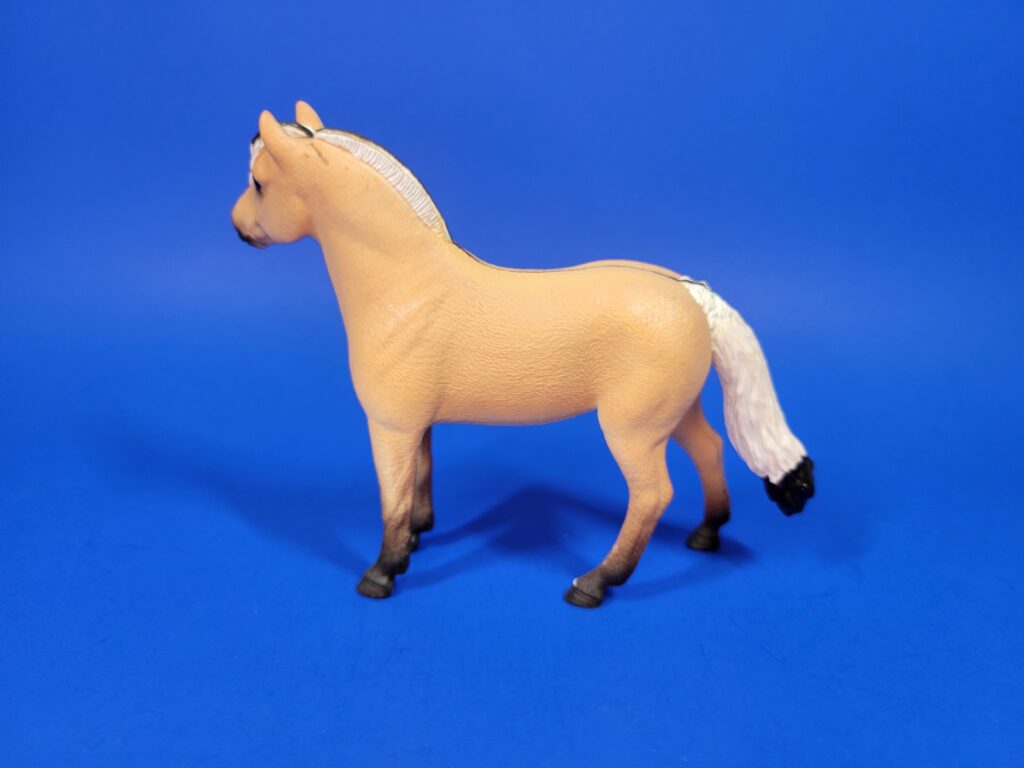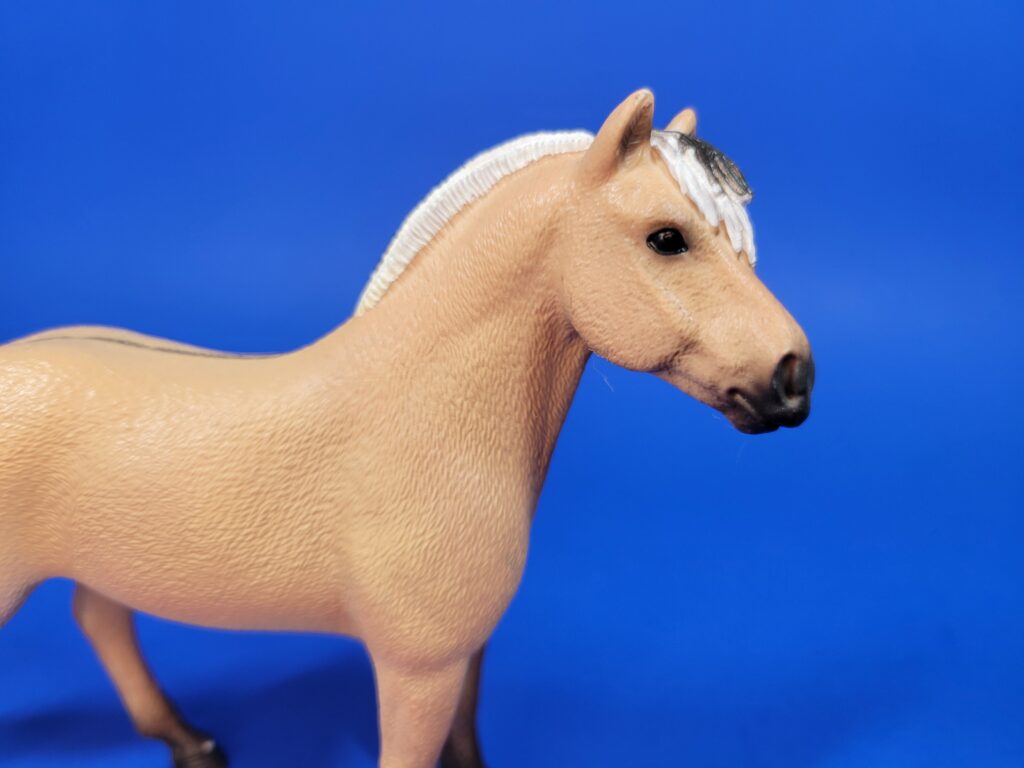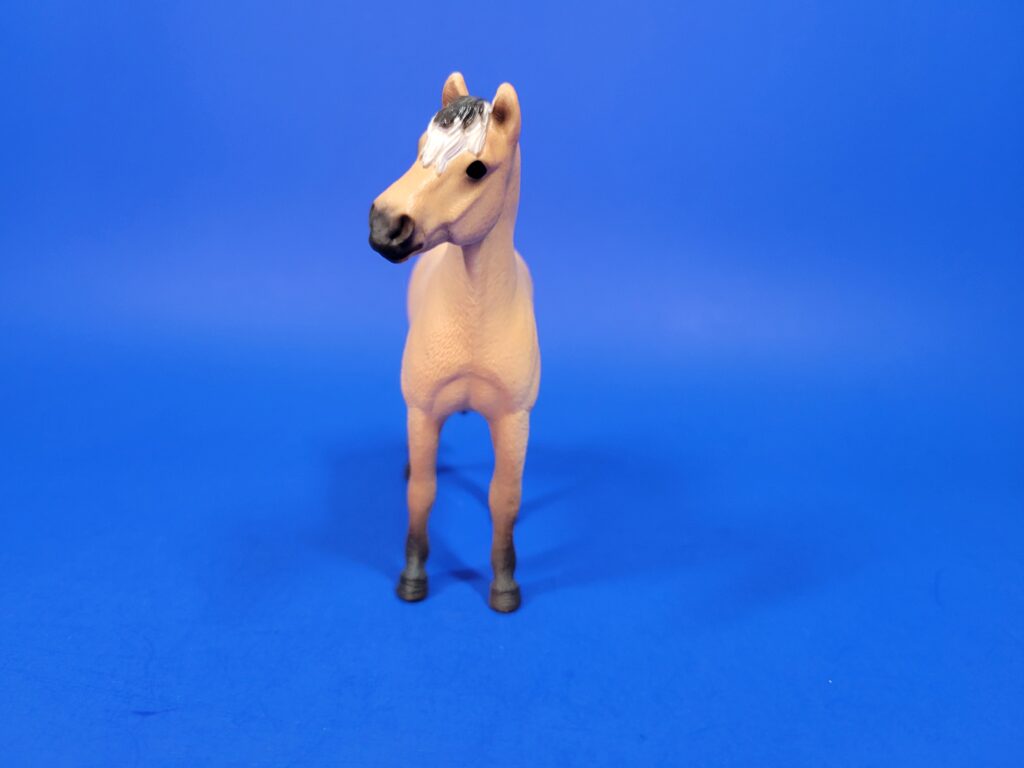
Howdy folks! I have another horse review, huge thanks to Happy Hen Toys and their enormous generosity to provide a sample of this pair of horses. A rather rare breed in toy form, these two were welcome to my herd and are quite an improvement over the previous generation. For this article we are covering this gelding that was produced by Schleich in 2024 and given the item number #13979. To see photos and a review of the mare you can go here. But let’s dive into it!

The Fjord horse hails from Western Norway, and the region is known for these small but strong, agile, and calm horses. The general look of this breed is distinctive from other horses: they have a compact build with strong features such as a slightly dished face, a thick and strong neck, and muscular legs with light feathering around the hooves. This physique is furthered by their primitive features such as their dun coloration (5 color varieties of such including red dun, yellow dun, grey dun, brown dun, and white dun), striped legs and withers, and a dark stripe running from the forelock through the center of the mane, down its back and through its tail. 90% of them are the “brown dun” color, the remaining 10% made up of the other four colors. There is one additional color available for these animals, known as “white” or “Kvit” in the native tongue; where the horse is light cream colored and has blue eyes, but this is considered an undesirable trait in the breed.

This small horse stands at about 13-14 hands high and at this stature in other breeds it would be called a pony- however, this breed is always recognized as a horse. Overall, the general of idea of this breed is that it shares a lot of characters with draft breeds but is more easily manageable in its small size. Its mane is often “roached” or cut short; this is because the mane is very thick and heavy and if left to grow naturally it would lead to a fallen crest of the neck. Because the outer hairs of the mane are white and the center is black, this leads to some creativity in customization for owners of the horse: they can cut the white hair into different shapes and let the black hair show through. It is believed that this is one of the earliest domesticated horse breeds and thought to be direct descendants of Przewalski horses since they share many characteristics with this wild type. Even today, this breed is largely considered one of the purest since it has rarely been crossbred and thus it is not highly influenced by other breeds. These animals have been found buried with Vikings over 2,000 years ago! A very long-lived breed, the horse will be found working well into their 30s. Because of their strong and agile features combining with their calm disposition, there is nothing that this little horse can’t lend itself to. Western disciplines, dressage, pulling carriages or farm carts, even being a suitable mount for a child or for therapy programs, this horse is highly diverse!

Now, looking into the actual models themselves; we have a gelding and a mare. Each will have their own articles posted and linked to each other. Here, we will discuss the Schleich fjord gelding # 13979. The figure itself is standing in a mostly neutral pose; the hind legs are both cocked (left forward and right behind) slightly, while the head is tilted and turned slightly to the horses right side. He has the natural forelock and roached mane of many animals of this breed, with no fancy trim attempted beyond a rather short cut. His coat to me is more on the orange-ish side for a “brown dun” coloration; he has the typical colored points on darker hooves and lower legs, and nose. Unfortunately, no visible striping on the legs or withers can be seen; only the dark dorsal stripe that runs through his forelock and through the tip of his tail is visible. Overall, the conformation and sculpting style of this horse is quite nice. There are generally considered two body types for the breed known today: the traditional and very pony like version, and one that has taken on more horse like proportions and physique. This gelding to me seems to represent the latter as he lacks the very thick neck, round belly, and stocky look of the pony or draft like roots. He instead carries himself on rather long slender legs with no feathering, a slim torso and a less exaggerated neck thickness and finer looking face. This may be the first representation of this body type in toy form. Overall, he has a very sweet looking face and calm stance to indicate the amicable personality of the breed. I think he would be a welcome addition to any horse collector’s shelf and herd of a rather less commonly represented breed!

Once again, thank you to Happy Hen Toys for the sample product and you can purchase this animal here for yourself.

Disclaimer: links to Ebay and Amazon on the AnimalToyBlog are affiliate links, so we make a small commission if you use them. Thanks for supporting us!




